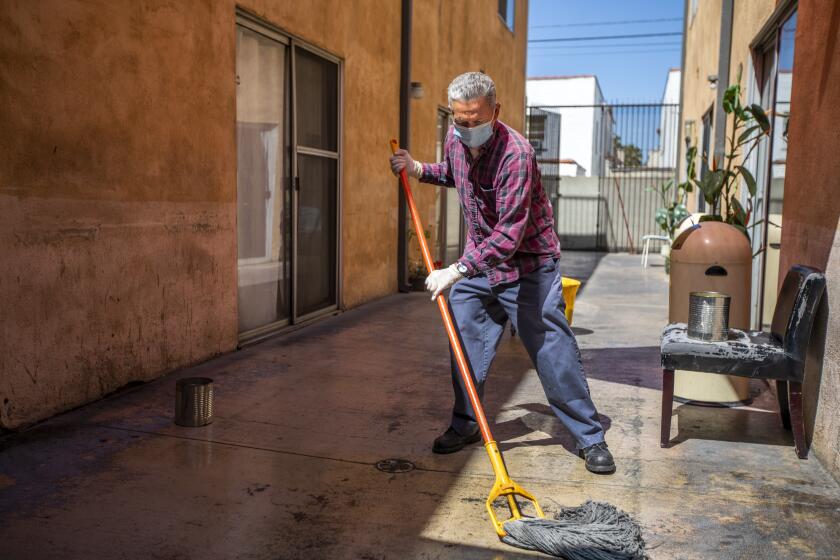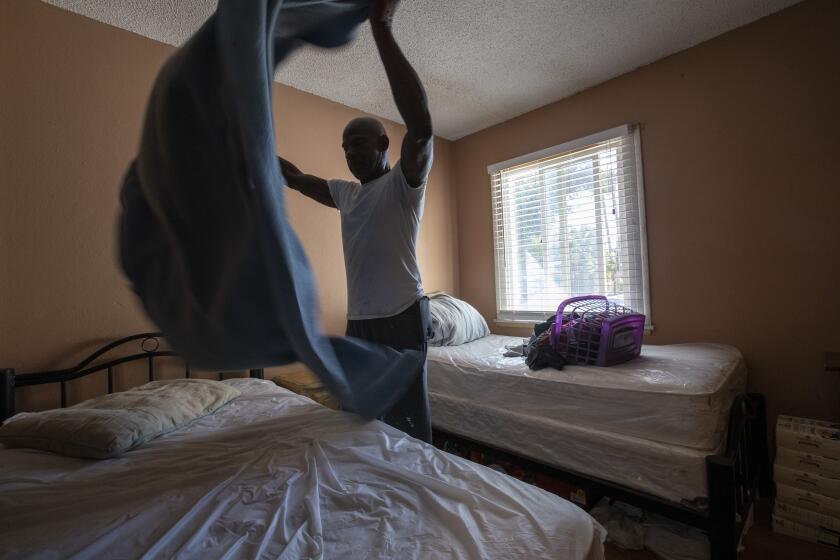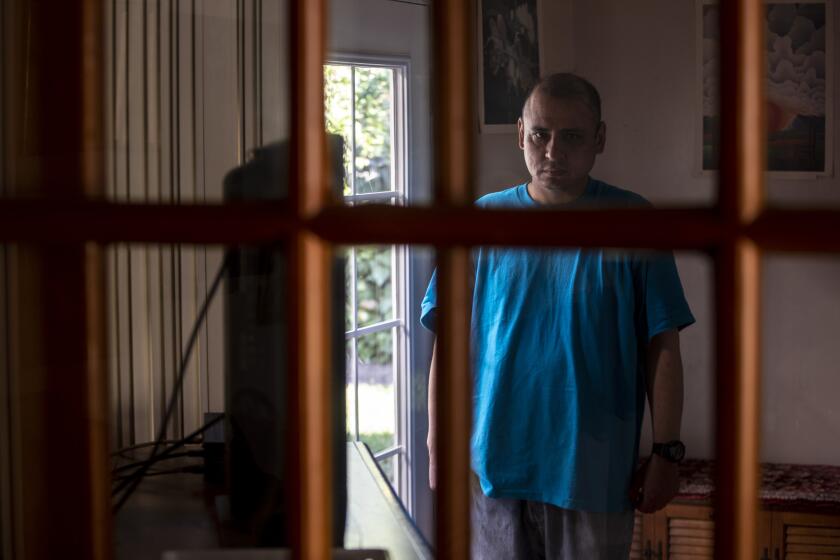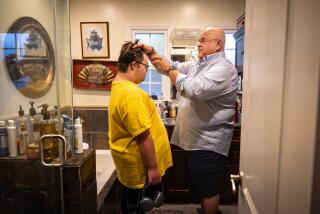
Each time he walks into his eight-bedroom home in Pasadena, Ka’inoamakua Otsuka Mandaloniz sees his three associate degrees from Pasadena City College, proudly displayed on a shelf in the living room.
His “mom,” as he calls her — the home’s owner and operator, Desiree Alvarado — put them there, as any proud caregiver would.
Mandaloniz, 33, has been diagnosed with schizoaffective disorder, and for more than a decade he has lived in board and care homes like Bonnie’s Guest House, where he and his fellow residents are provided with three daily meals, medication management and a structure to daily living. Before board and care homes, Mandaloniz, a lifelong L.A. County resident, was briefly unhoused.
He said the safety and support he receives at Bonnie’s, where he has lived the last eight years, was “essential” to his graduating with his social sciences, history and humanities degrees, and starting to work on a fourth.
“Bonnie’s helped me make a support network by entrusting me with the responsibility of taking my medicine, [developing] the ability to interact with other people, and specifically being patient with them or being understanding with them,” he said.
Despite their residents’ success at building independent lives, homes like Bonnie’s have been under a perpetual threat of closure for years. An estimated 142 facilities closed in the first quarter of this year in California, according to state data — including 27 in L.A. County, 24 in San Diego County and 14 in Orange County — alarming advocates and officials. A total of 3,057 beds were lost statewide.
When a board and care closes, precious affordable housing vanishes — sometimes turning residents onto the streets. Critics say leaders in Sacramento have not done enough to support the homes.
Board and care homes started in California around 1969 as the state shut down its asylums and pushed for community-based mental health care.
There are now an estimated 13,000 across the state, including about 3,000 in L.A. County, according to state data and a trade organization that represents operators. Since 2016, L.A. County has lost more than 100 of these privately owned and operated facilities and 1,700 beds. These numbers don’t account for any board and cares that have opened, which isn’t tracked like closures.
The main reason for the closures is simple: money. Because of a payment scheme based on state budget allotments and Social Security levels, operators are paid only $44 a day per person with serious mental illness. If they housed adults with developmental disabilities, they would be paid about $191 to $391 a day per person based on the level of care they need — a discrepancy advocates say must be fixed if board and care homes are to survive.
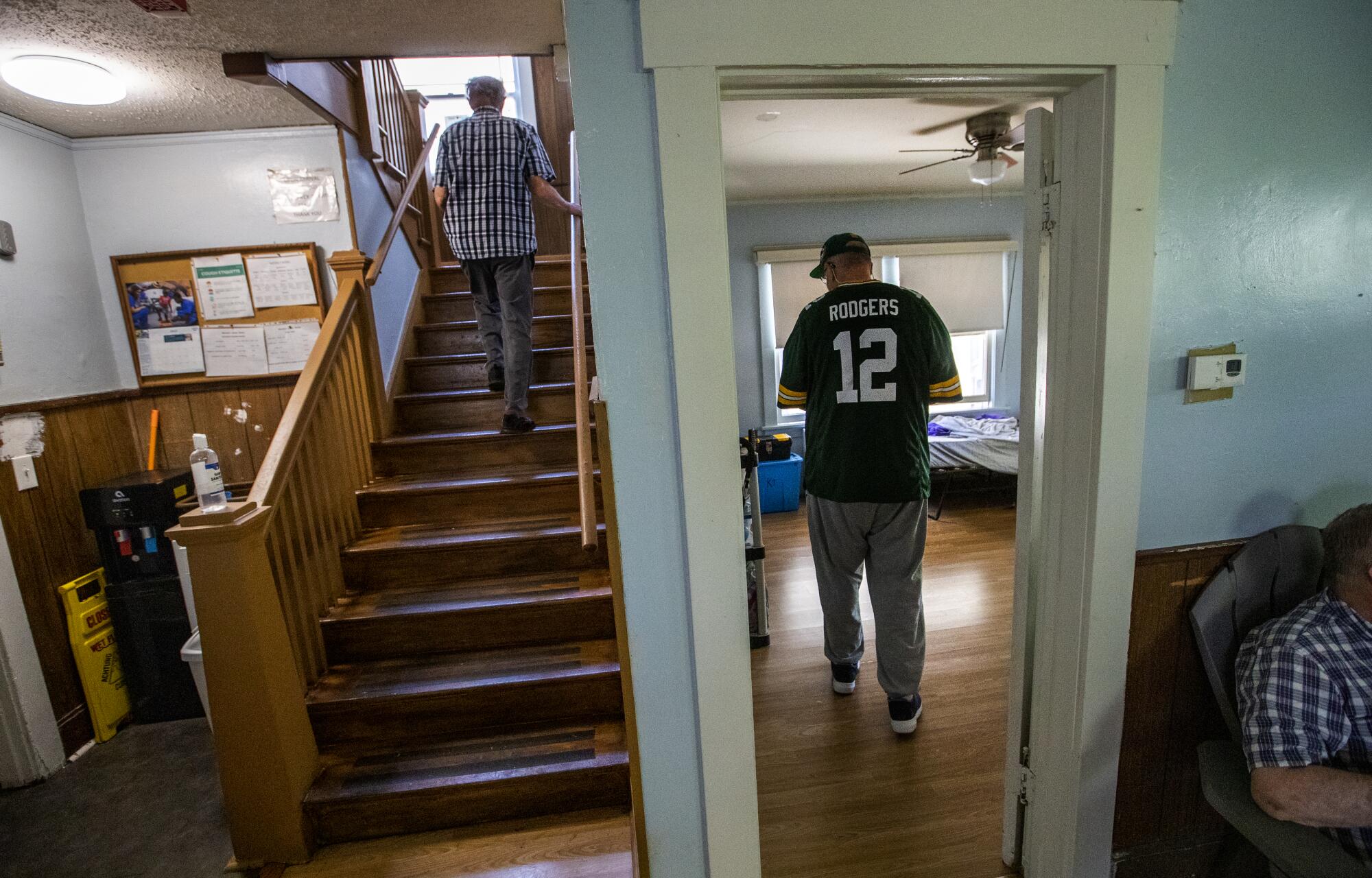
Advocates have sounded the alarm for almost two decades about how these licensed facilities, which provide 24/7 care and support for Californians with serious mental illnesses, are vital to solving California’s homelessness crisis — but for years, lawmakers did little to curb the closures.
That started to change locally in 2019 when the L.A. County Board of Supervisors asked county staff to develop a strategy to save board and care homes. Since then, the county Department of Mental Health has secured millions of dollars from the state and federal governments to pay facilities more for new clients and finance deferred maintenance.
Board of Supervisors Chair Janice Hahn said in a statement that these short-term fixes the county has implemented won’t matter “if we keep losing the facilities we do have at this rate.”
“At the end of the day, the only way to ensure our board and cares stay open in the long run is for the state to increase the reimbursement rate to a level that reflects the actual costs of running these facilities,” Hahn said.
One of those programs, operated by the county Department of Mental Health, provides at least $1,000 a month on top of the $1,324.82 per month per resident that operators receive for new residents with complex needs.
Alarmed by the closure of board and care homes, L.A. officials are gearing up to push the California Legislature and Gov. Gavin Newsom for more money.
The extra money that Rhoda Gochin got for two new residents at her board and care home in Canoga Park is helping her stay open.
Gochin and her husband have previously taken money from their retirement accounts and borrowed from the bank to keep their board and care open. When they opened it in 2003, Gochin worked as a nurse in a hospital and her husband as a psychologist. They both saw what patients with serious mental illness went through, bouncing around the system, and wanted to help.
But they’ve since retired, and without incomes, “we’re just trying to put food on the table and pay the mortgage,” she said.
At their board and care, everyone gets cake for their birthday, and they celebrate the holidays together. Gochin takes residents on social outings, sometimes to the beach.
“You see the happiness, you see the joy, that somebody cares for them,” Gochin said. “If it was because of the money part of this, we probably would not be here.”
Gochin said she is frustrated she cannot receive supplemental reimbursements for all five residents, since the program is only for new tenants.
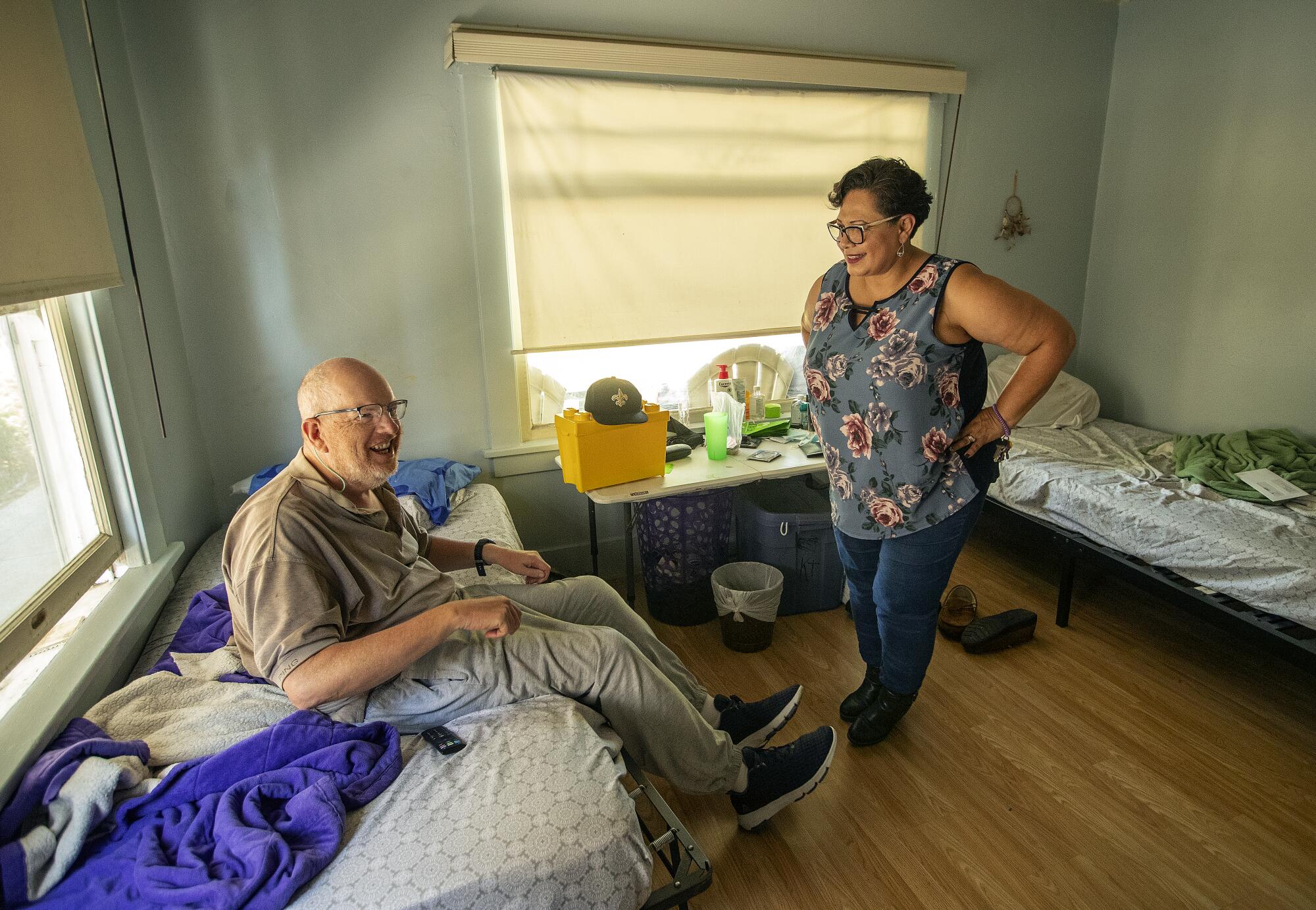
Maria Funk, deputy director of housing and job development at the county Department of Mental Health, readily acknowledges that the county doesn’t have the money for that.
“There are so many people that have mental illness, we would run out of money immediately,” Funk said.
That money came from the state’s Community Care Expansion program. It includes $570 million to finance capital expansion projects for operators who want to buy new facilities or rehab current ones, and $249 million to help save existing board and cares by paying them subsidies and also financing their deferred maintenance.
“We’re taking unprecedented action to rebuild California’s mental and behavioral health infrastructure, getting folks the help they need to get out and stay out of homelessness,” Gov. Gavin Newsom said in 2022.
Funk said the Community Care program is great, but that the county Department of Mental health believes the state could go further to save board and cares.
“It’s one-time money and it’s a short-term fix,” Funk said, “And we really need a long-term solution.”
To help stall the closures, Bennie Tinson, executive director of the Licensed Adult Residential Care Assn., and others want state lawmakers to take some of the $570 million allocated for capital improvements and reallocate it for one-time $2,000-per-client payments to operators.
Tinson said the state application process for capital improvements was so complicated that none of his members — many of whom are female small-business owners running board and care homes for fewer than 10 clients — received these state funds. Rather, the money went primarily to large companies and developers who had the business and legal personnel and savvy to apply — including five recipients with 276 proposed new beds in Los Angeles County awarded a total of $41.1 million, according to county records.
Alvarado, who operates Bonnie’s Guest House, said she attended multiple workshops to try to apply, but in the end gave up. The state-funded grant application, she said, required she hire an architect and construction company before she ever saw a dime.
“That application was not for people like us,” she said.
Board-and-care homes — created to care for those who cannot care for themselves — are being squeezed out of business by an antiquated state funding system.
To make ends meet, Alvarado’s entire family helps. Her mother and mother-in-law make the residents’ meals and shop at multiple grocery stores looking for deals.
Her aunt helps out too, taking residents to doctor’s appointments and updating their appointment board so they can keep track of the dozens of upcoming medical appointments. And her kids, almost 20 and 18, help too, so much that her daughter is considering a psychology degree.
Alvarado said she has considered closing multiple times, but her love for her residents stops her every time.
“At Thanksgiving, I cook a big turkey, and I bring my own family, and we basically serve them [holiday dinner], and we play games and do gift exchanges during Christmas,” she said. “Those are the moments when they’re very happy and getting gifts and feel like a family, a family that cares for them.”
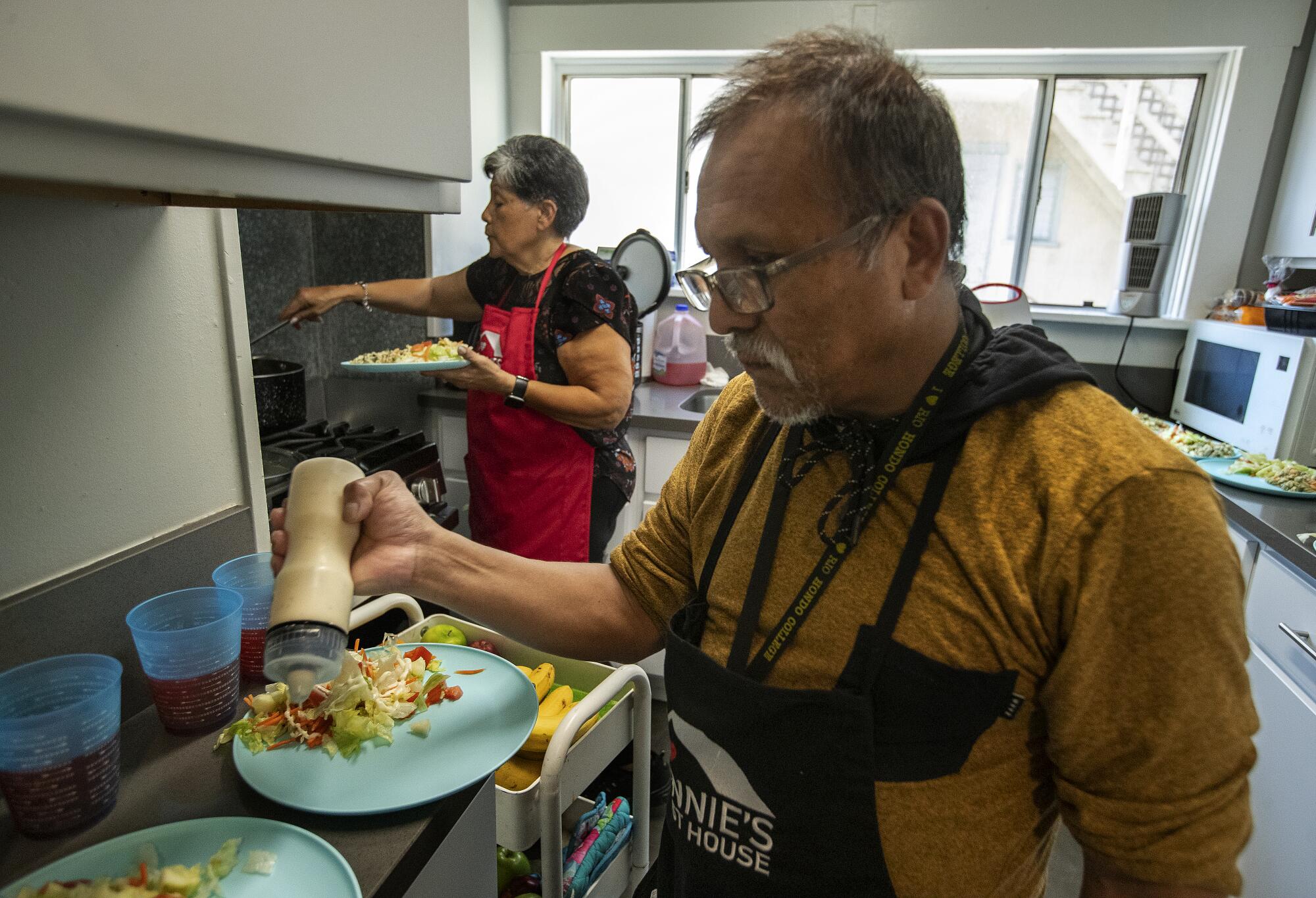
Some residents live decades at one board and care, like a man who has lived at Bonnie’s Guest House for 36 years. Others, like Mandaloniz, move once they’ve reached a level where they’re comfortable trying further independence.
Mandaloniz has been accepted into Cal State Los Angeles, where he plans to move in two years to pursue what’s next in his career.
“That’s scary — it’s very scary — I’ve been in these facilities where they take care of me for over 10 years here,” Mandaloniz said.
That’s why it’s a two-year plan, to start moving toward a place where he can see himself living in the dorms or nearby campus while pursuing a history degree. And Mandaloniz knows he isn’t on his own in charting that future.
“If there’s a final message I can tell anybody,” he said, “it’s that these places help people.”
Times staff writer Doug Smith contributed to this report.
More to Read
Sign up for Essential California
The most important California stories and recommendations in your inbox every morning.
You may occasionally receive promotional content from the Los Angeles Times.
